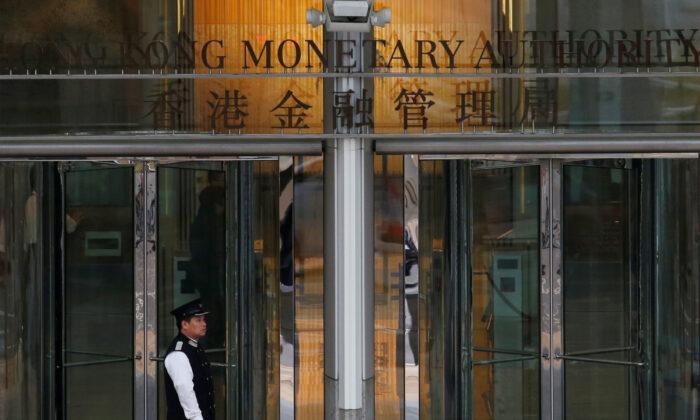HONG KONG—Hong Kong on Thursday raised its base rate by 75 basis points (bps) to 3.5 percent, prompting the largest commercial banks operating in the territory, including HSBC, to increase their best lending rates.
HSBC was the first bank in Hong Kong to announce it was raising its best lending rate by 12.5 basis points (bps) to 5.125 percent from 5.0 percent, effective Sept. 23, its first rate hike since September 2018.
It was followed by Standard Chartered, which raised its best lending rate by the same amount to 5.375 percent, starting Sept. 23.
“Anticipation around a potential prime rate increase in Hong Kong has been ripe and today’s announcement marks the beginning of an upward cycle,” Luanne Lim, HSBC’s chief executive for Hong Kong, said in a statement.
Hong Kong’s monetary policy moves in lock-step with the United States as the city’s currency is pegged to the greenback in a tight range of 7.75–7.85 per dollar.
However, commercial lenders have appeared reluctant to follow the increase in the base rate—which has reached the highest level since October 2008—too closely.
Banks are seen factoring in two more expected interest rate hikes by the U.S. Fed before year-end, said Kelvin Lau, senior Economist for Greater China at Standard Chartered.
They are weighing between adjusting at one go and testing the water before another window in November and December to further adjust and narrow the gap, Lau added.
The widening spread between Hong Kong dollar and U.S. dollar short-term interest rates “will incentify market participants to conduct further carry trade,” said Eddie Yue, chief executive of Hong Kong Monetary Authority on Thursday.
The move will result in triggering the weak side of the convertibility undertaking again, he said.
Yue advised the public to be prepared for banks to increase interest rates and to manage risks of borrowing activities.
Meanwhile, Hong Kong’s financial chief reassured the public that he doesn’t see a sharp risk to the city’s real estate market nor a need to adjust property control measures.
Any impact on bank’s asset quality was also limited, according to HKMA’s Yue.
“The latest rate on bad debt is about 1 percent and may adjust upward a little bit. But it is still low as compared to some international levels,” he said.
The U.S. Fed delivered its third straight rate increase of 75 bps on Wednesday and signaled borrowing costs would keep rising, underscoring the U.S. central bank’s resolve not to let up in its battle to contain inflation.





